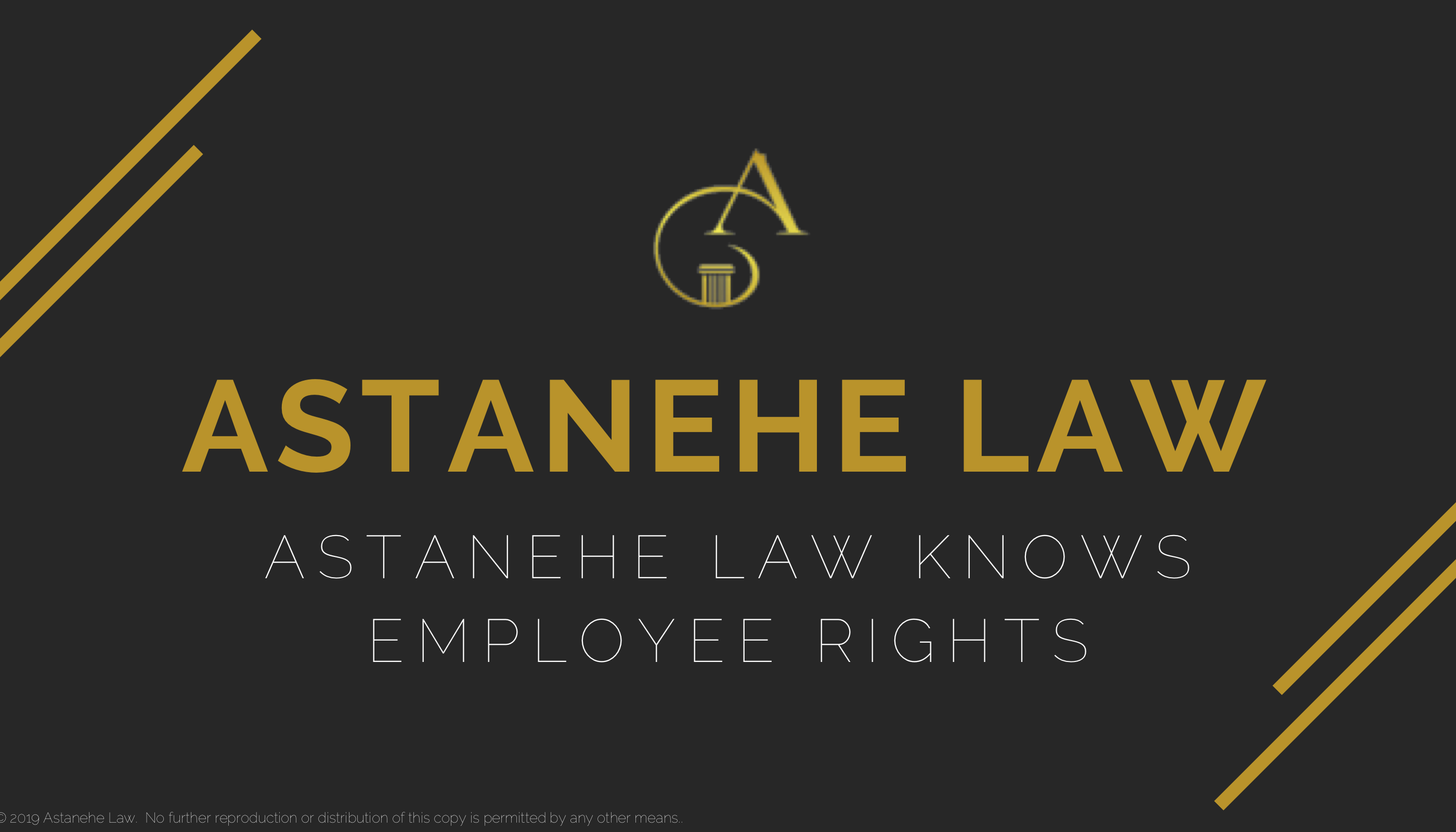Although more than fifty years have elapsed since the commencement of the Civil Rights movement, numerous Americans continue to face discrimination’s painful indignities. Society may have progressed since the pre-Civil Rights era, yet discrimination remains a pervasive component in nearly all facets of American life, including in the workplace. A quarter of all Americans say they have experienced racial discrimination in the workplace and 42% of women report having to endure workplace gender discrimination. Employment discrimination is one of the most devastating and destructive forms of discrimination because employees rely on jobs to provide for their families. Frequently, employees facing employment discrimination do not only suffer harassment, retaliation, and humiliation but also live in constant fear that their job is on the line.
Employment discrimination occurs when a worker or a group of workers is treated differently from the rest of the group either because of their personal characteristic or conduct. For employment discrimination to be legally actionable, the personal characteristic must be a legally recognized “protected” characteristic.
Protected Characteristics &
Employment Discrimination Forms
In California, protected characteristics (also referred to as a protected class) include race, color, religion, gender, national origin, citizenship status, disability, sex, sexual orientation, age (40 and older), genetic information, ancestry, marital status, gender identity and gender expression, AIDS/HIV, medical condition, political activities or affiliations, military or veteran status, and domestic victim survivor status.
Certain cities have passed laws protecting additional personal characteristics. For example, San Francisco protects against discrimination based on height, weight, and having diseases not transmitted by casual contact, including AIDS/HIV.
Discrimination can take two forms, disparate treatment or disparate impact. Disparate Treatment discrimination occurs where an employer treats someone differently because of a protected characteristic. Disparate Impact discrimination occurs where an employer’s practice or rule treats employees in a seemingly equal manner but harms certain employees that share a particular protected characteristic.
Proving Employment Discrimination
Generally, an employee alleging employment discrimination must prove:
- They are a member of a protected class;
- The employer’s discriminatory animus towards protected class members;
- There was an adverse employment action;
- A link between the employer’s discriminatory animus and the adverse action;
- Damages; and,
- A link between the adverse action and damages. Mamou v. Trendwest Resorts, Inc., 165 Cal. App. 4th 686, 713 (2008).
Employment Discrimination Damages
An employee who suffered employment discrimination is entitled to recover back pay, which includes unpaid wages, overtime, and other withheld compensation and fringe benefits, future lost wages, reinstatement, civil penalties, and emotional distress damages.
Back pay is the difference between the compensation an employee would have earned in a job the employee was denied and the amount that the employee earned, or could have earned in the same area. Back play reflects total earnings and includes possible pay raises and promotions.
Front pay reflects the future earnings expectancy that has been lost or diminished. Courts generally award such damages when reinstatement to the former position is not feasible or advisable. Fadhl v. City & Cty. of San Francisco, 741 F. 2d 1163 (9th Cir. 1984).
Fringe benefits or employment perks are non-wage or salary compensation such as stock options, meal and travel allowances, and savings or retirement plan contributions. To collect lost or denied fringe benefits, an employee must establish: (1) These benefits would have been received and are not speculative; and, (2) Their loss flows naturally from the wrongful termination. Panhandle Eastern Pipe Line Co. v. Smith, 647 P. 2d 1020 (Wyo. 1981).
Reinstatement occurs where the settlement or judgment calls for employee restoration to the former position after a wrongful discharge. If accepted, the employer may still be required to fulfill a back pay award. However, front pay damages are not typically concurrently awarded with reinstatement.
No Upfront Costs for Employment Discrimination Lawsuit
You will not owe Astanehe Law a penny until after you obtain a successful settlement or judgment. Astanehe Law proudly offers contingency representation for employment discrimination lawsuits which means there is no upfront cost in securing legal representation.
Astanehe Law Knows Employment Discrimination
Michael M. Astanehe possesses a zeal for helping employees bring claims against their employers. Mr. Astanehe is an aggressive litigator with several years of civil litigation experience. He is willing to take your case to trial, if necessary. This ferocity ensures that Astanehe Law will obtain the highest recovery possible for each client.
Litigation is stressful. To that end, Mr. Astanehe provides each client with comprehensive legal service so that they remain fully-informed and comfortable throughout the process. Astanehe Law strives to make litigation as stress-free as possible.
With Astanehe Law on your side, you are poised to obtain the maximum recovery possible. Call today for your free consultation!

